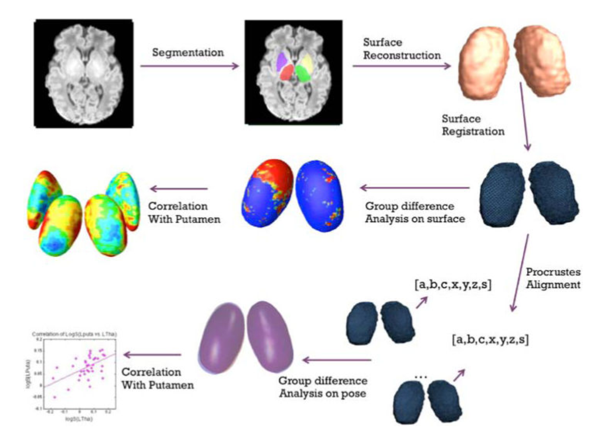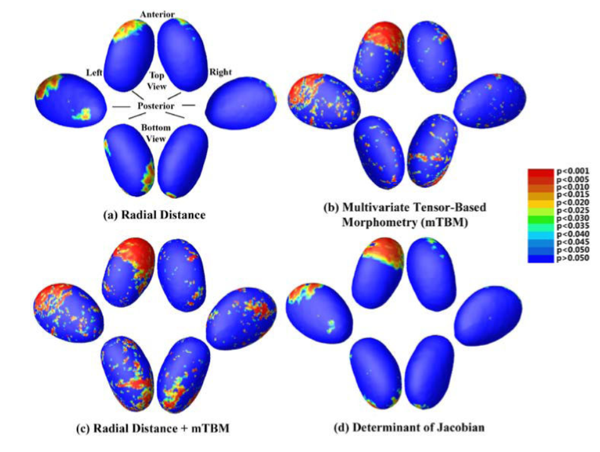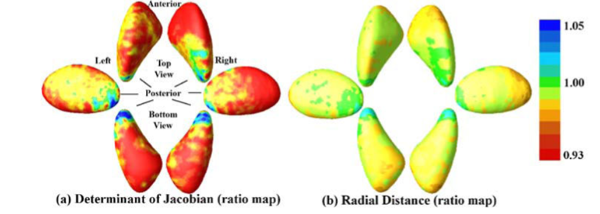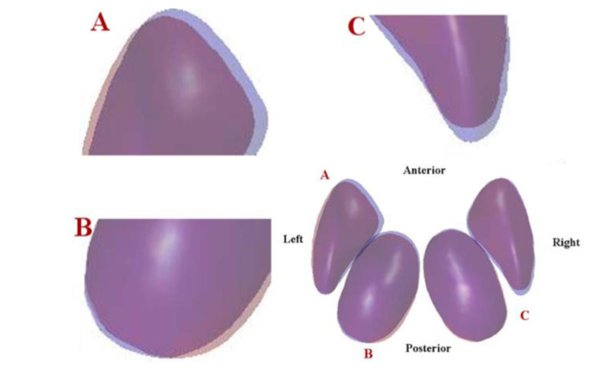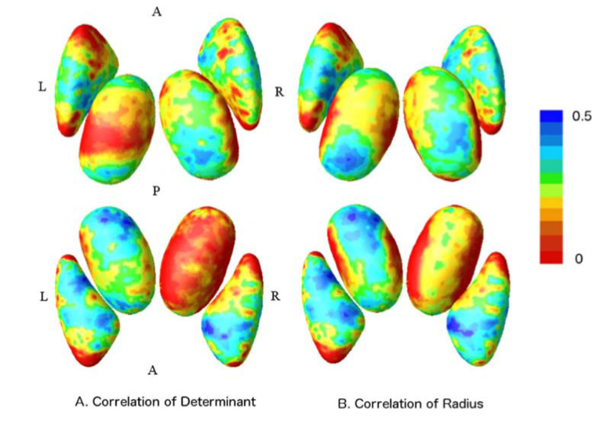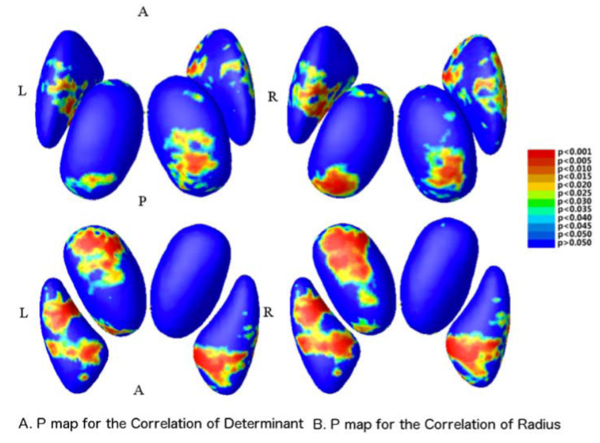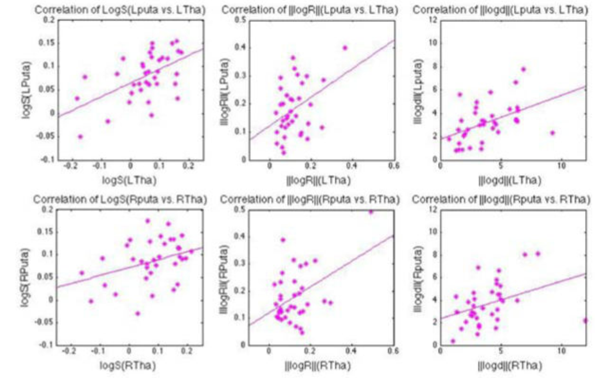Thalamic alterations in preterm neonates and its relation to ventral striatum disturbances revealed by a combined shape and pose analysis
Lao Y, Wang Y, Shi J, Ceschin R, Nelson MD, Panigrahy A, Leporé N
Abstract
Finding the neuroanatomical correlates of prematurity is vital to understanding which structures are affected, and design efficient prevention andtreatment strategy. Converging results reveal that thalamic abnormalities are important indicators of prematurity. However, little is known about the localization of the disturbance within the subnuclei of the thalamus, or on the association of altered thalamic development with other deep gray matter disturbances. Here, using brain structural magnetic resonance imaging (MRI), we perform a novel combined shape and pose analysis of the thalamus and ventral striatum between 17 preterm and 19 term-born neonates. We detect statistically significant surface deformations and pose changes on the thalamus andventral striatum, successfully locating the alterations on specific regions such as the anterior and ventralanterior thalamic nuclei, and for the first time, demonstrating the feasibility of using relative pose parameters as indicators for prematurity in neonates. We also perform a set of correlation analyses between the thalamus and the ventral striatum, based on the surface and pose results. Our methods show that regional abnormalities of the thalamus are associated with alterations of the ventral striatum, possibly due to disturbed development of sharedpre-frontal connectivity. More specifically, the significantly correlated regions in these two structures point to frontal-subcortical pathways including the dorsolateral prefrontal-subcortical circuit, the lateral orbitofrontalsubcortical circuit, the motor circuit, and the oculomotor circuit. These findings reveal new insight into potential subcortical structural covariatesfor poor neurodevelopmental outcomes in the preterm population.
Figures (click on each for a larger version):
Related Publications
- Paquette N, Shi J, Wang Y, Lao Y, Ceschin R, Nelson MD, Panigrah A, Leporé N, Ventricular Shape and Relative Position Abnormalities in Preterm Neonates, NeuroImage: Clinical,15, 2017, pp. 483-493
- Shi J, Wang Y, Ceschin R, An X, Lao Y, Vanderbilt D, Nelson MD, Thompson PM, Panigrahy A, Leporé N, A Multivariate Surface-based Analysis of the Putamen in Premature Newborns: Regional Differences within the Ventral Striatum. PLoS ONE, 2013, 8(7), e66736.
